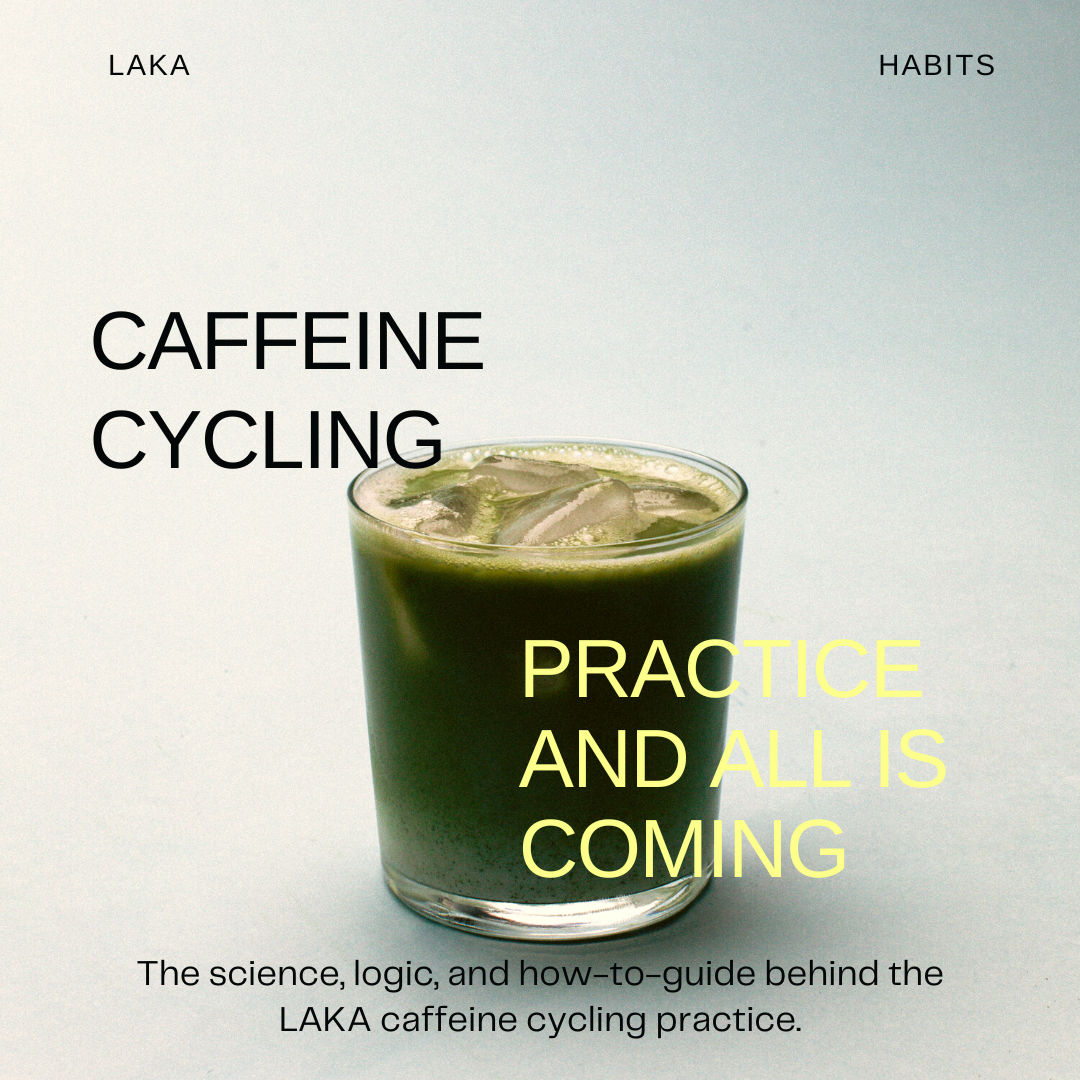We've just been shoving this concept down our community's throat for years now. But why? How? And for how long?
The LAKA Caffeine-cycling protocol is essentially a practice that not only alternates the types of caffeine sources you're enjoying, but is a style of stimulation that allows your nervous system to take rest from various hormonal states set on by our beloved stimulant: caffeine.
At LAKA, an idea we have is to enjoy matcha 5 days out of the week (max), and coffee 2 days a week. Of course, if coffee is not part of your love language then you can essentially disregard this idea. The way our body responds to the stimulant caffeine in matcha is vastly different than the way coffee caffeine turns us on.
Although the caffeine in both matcha and coffee technically enter the bloodstream within 45 minutes, Matcha contains L-theanine which acts as almost a buffer and helps to calm that release of caffeine into the system so that your mood stays relatively stable and jitters are avoided. The nervous system loves this speed if caffeine is an absolute must. Although coffee has a bit more of an unhinged energy about it, it's also medicinal in doses that are metabolically fit for an individual and during times where that jolt is of use.
This idea of caffeine cycling has worked wonders for our customers who deeply crave that rotation of coffee and don't want to fully give it up. If you metabolize coffee caffeine well, but just want to overall soothe your nervous system in small ways throughout your weeks without going cold turkey on coffee, this practice is for you! Some benefits of caffeine cycling include:
1. Balanced energy throughout the week: Alternating between the rush of coffee caffeine and the balanced, slow-release of matcha caffeine can help your cortisol levels find a happy medium without pressing your energy to the accelerator every day of the week. Hopefully, this will prevent you from caffeine burnout and fatigue that follows crashes.
2. Antioxidant variety: Matcha and coffee are both extremely antioxidant rich. Coffee contains chlorogenic acid that has been linked to improved glucose metabolism and lower levels of inflammation. Matcha contains antioxidants like EGCG (epigallocatechin gallate) which has been linked to protection against chronic disease, thermogenesis (rate at which calories are burned), and skin cell repair. Alternating ensures you cycle through these highly-researched antioxidants throughout your week.
3. Expanded taste: In Ayurveda, it's recommended to consume a wide variety of tastes (sweet, sour, salty, etc.) to balance the body and ensure diet diversity. The bitter taste of coffee (great for digestion!) and the umami (a rare taste profile) flavor of matcha expands your sensory experience. More flavor, more fun.
4. Nutrient-diversity: To piggy back on the taste talk, with that comes nutrient-diversity. Everyone loves coffee, but it's relatively low in nutrients as we only consume the infusion of the beans in water. Matcha, conversely, is much more nutrient-dense as we consume the entire leaf of the plant which is rich in prebiotic fiber, antioxidants, amino acids, and chlorophyll.
Try it for yourself! Save your coffee drinking days for when you need to use physical stamina (or quick bursts of mental endurance) to complete your daily load. The other days, give your nervous system the gift of slow-release energy and nutrients that support the body and opt for matcha. Your puzzle can look however works with your schedule, and most customers report after a while they prefer those 5 days of matcha and begin foregoing coffee entirely except for special occasions (traveling in Europe anyone?)


